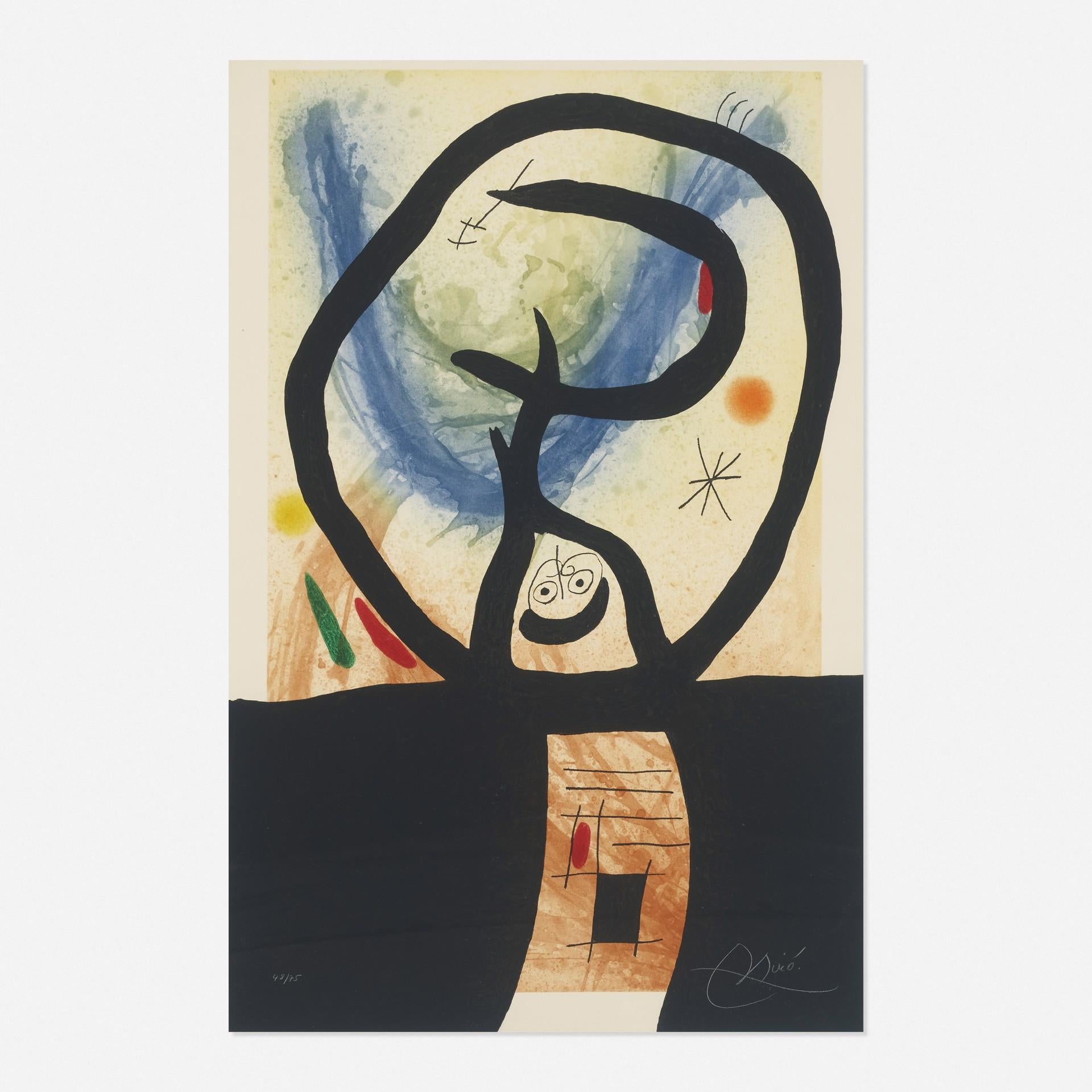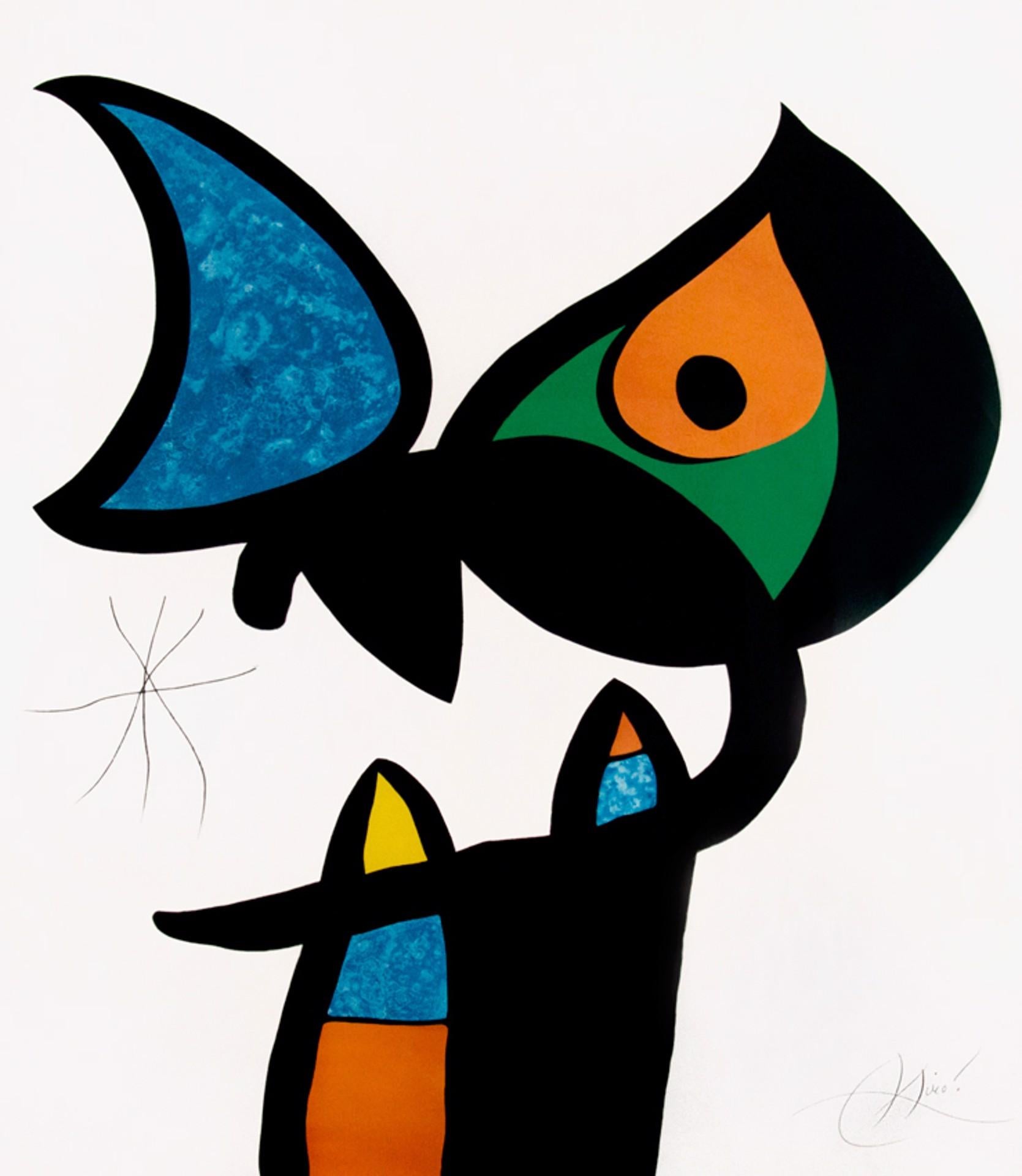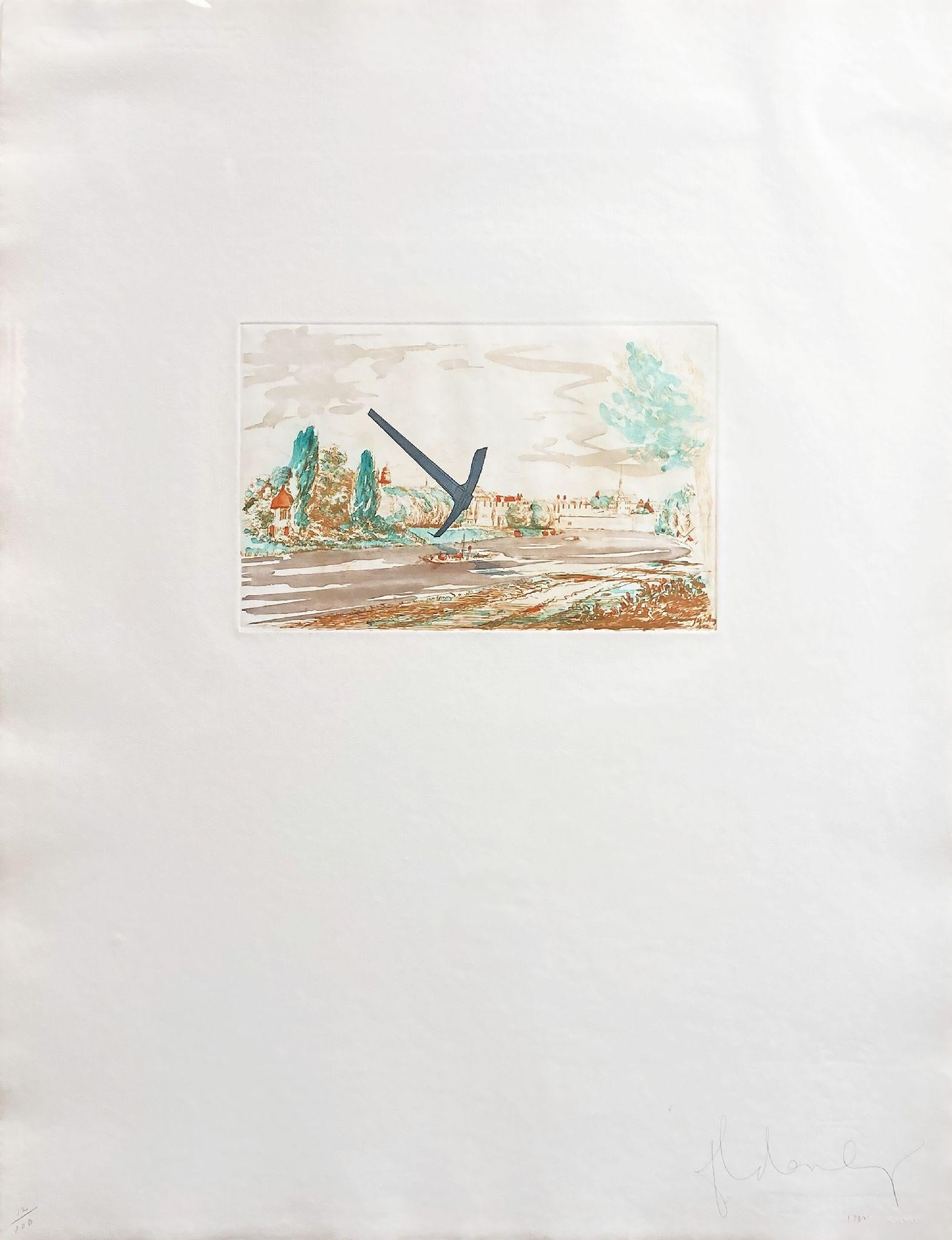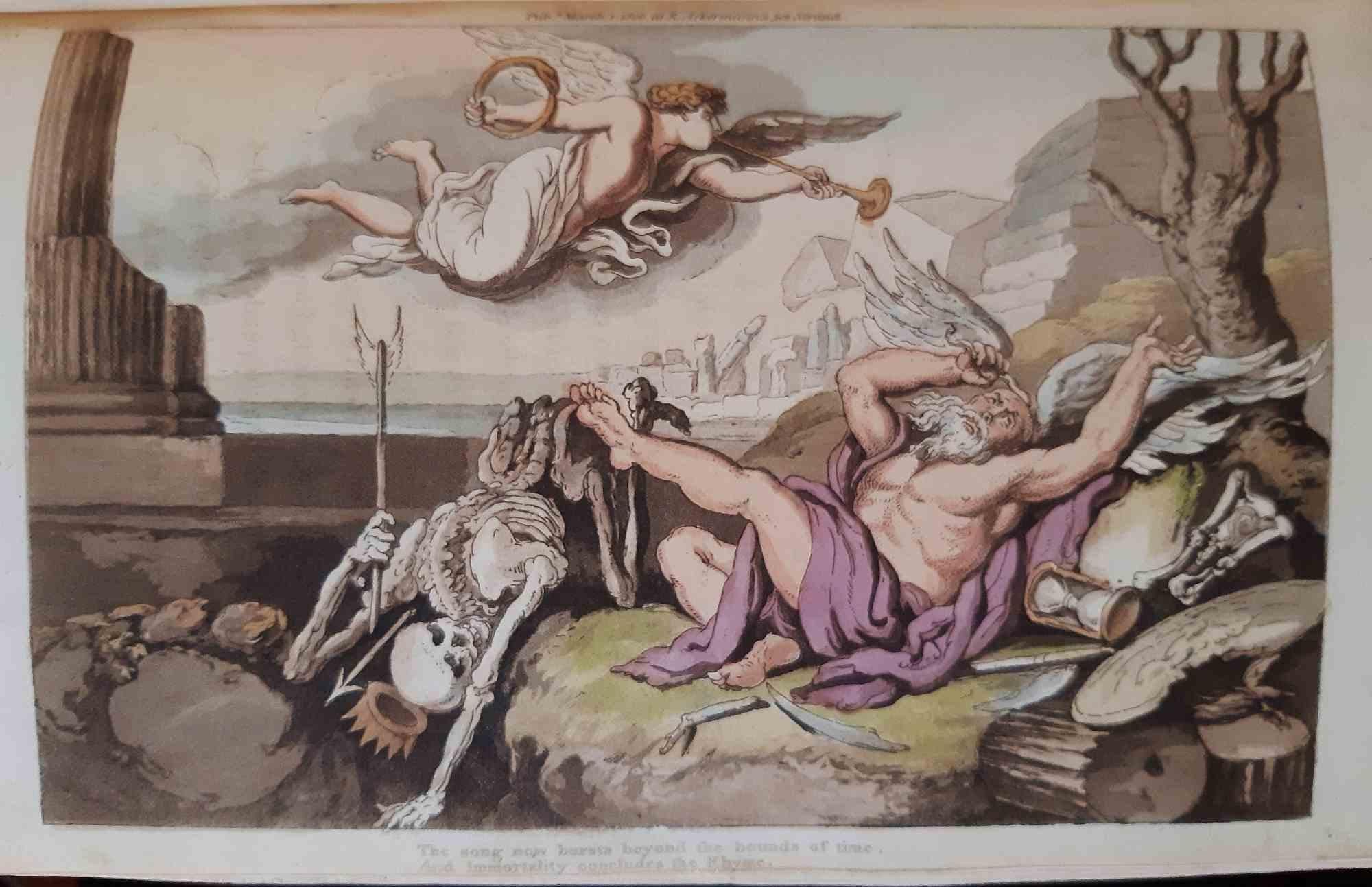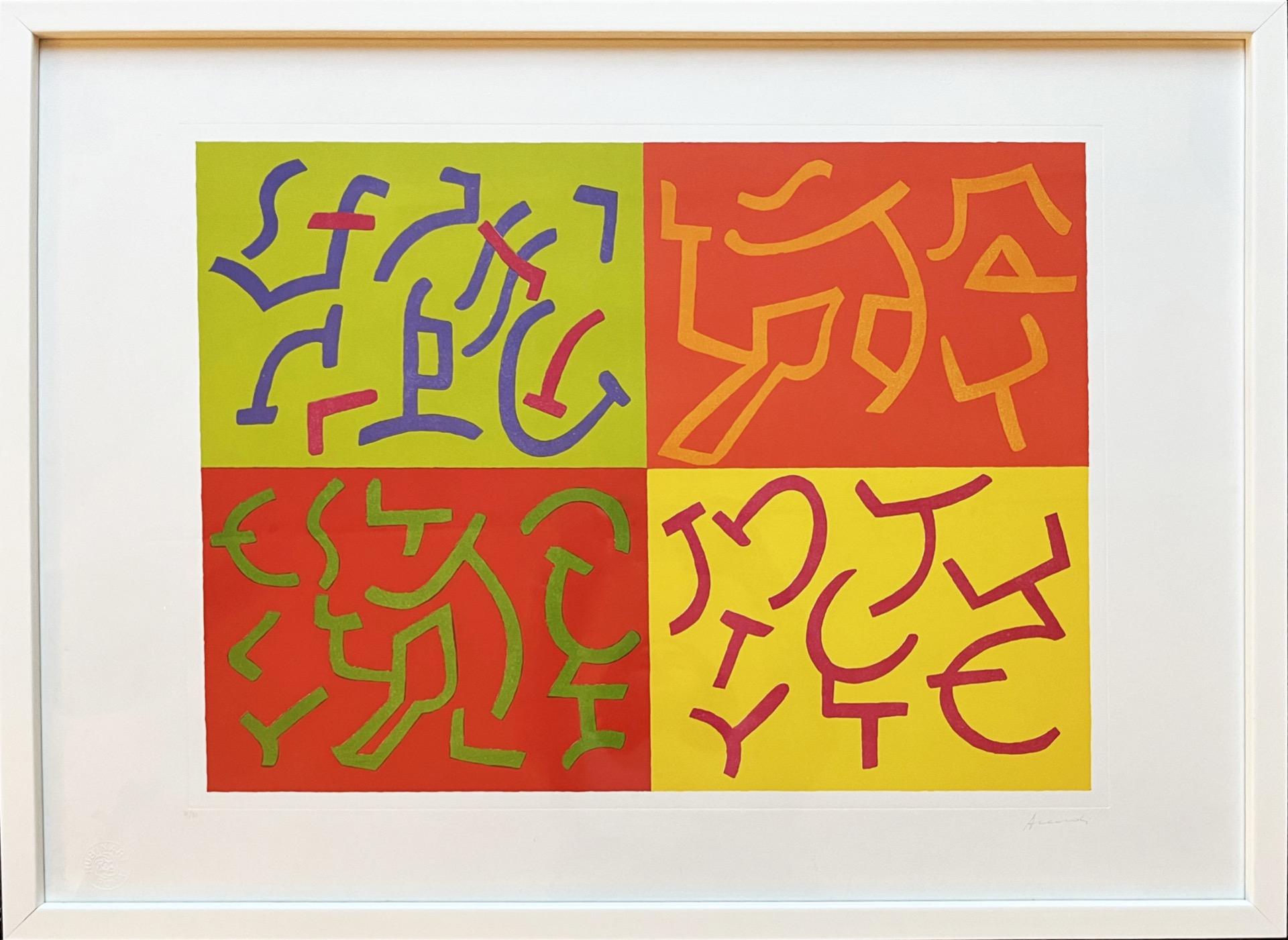Items Similar to Lovers III - Etchings and Aquatints by Giacomo Manzù - 1970s
Want more images or videos?
Request additional images or videos from the seller
1 of 2
Giacomo ManzúLovers III - Etchings and Aquatints by Giacomo Manzù - 1970s1970s
1970s
About the Item
Hand Signed. Edition of 125 prints.
Published in the artwork series: "Giacomo Manzù: Fifteen original etchings and aquatints", by Touchstone Suite, New York, 1970.
Giacomo Manzù (Bergamo, 1908- Ardea, 1991), pseudonym of Giacomo Manzoni, was a famous italian artist and sculptor. He devoted himself to sculpture, but also to drawings, etchings and paintings, often centred on female models, painters, female dancers and lovers figures. His works are valued also abroad, where, as well as in Italy, he exhibited from 1933. He also won several italian and internationsl prizes thanks to his famous works and his importance in art field. His works are exposed in several museums, like Vatican Museums and Giacomo Manzù Museum in Ardea.
The theme of lovers is a recurring one in the artist's work. The figures are portrayed in tender and passionate hugs, often half covered by thin and soft clothes.
- Creator:Giacomo Manzú (1908 - 1991, Italian)
- Creation Year:1970s
- Dimensions:Height: 19.69 in (50 cm)Width: 25.6 in (65 cm)Depth: 0.04 in (1 mm)
- Medium:
- Movement & Style:
- Period:
- Condition:Insurance may be requested by customers as additional service, contact us for more information.
- Gallery Location:Roma, IT
- Reference Number:
About the Seller
4.9
Platinum Seller
These expertly vetted sellers are 1stDibs' most experienced sellers and are rated highest by our customers.
1stDibs seller since 2017
6,732 sales on 1stDibs
Typical response time: 2 hours
- ShippingRetrieving quote...Ships From: Rome, Italy
- Return PolicyA return for this item may be initiated within 14 days of delivery.
More From This SellerView All
- The English Dance of Death - The Dance of Life by Thomas Rowlandson - 1810sBy Thomas RowlandsonLocated in Roma, ITThe English dance of death - The dance of life is an original pair of rare and fine books written by William Combe (25 March 1742 – 19 June 1823) and illustrated by Thomas Rowlandson (13 July 1757 – 21 April 1827) in 1816/1817. Original First Edition. Published by Ackermann, London. Format: in 8°. The dimensions of the book are indicative. The book includes 3 volumes with 295 + 299 + 285 pages. 2 frontispieces and 96 handcolored etchings. 252 pages and 26 handcolored aquatints. Good conditions. Thomas Rowlandson (13 July 1757 – 21 April 1827), he was an English artist and caricaturist of the Georgian Era, noted for his political satire and social observation. A prolific artist and printmaker, Rowlandson produced both individual social and political satires, as well as large number of illustrations for novels, humorous books, and topographical works. Like other caricaturists of his age such as James Gillray, his caricatures are often robust or bawdy. Rowlandson also produced highly explicit erotica for a private clientele; this was never published publicly at the time and is now only found in a small number of collections. His caricatures included those of people in power such as the Duchess of Devonshire, William Pitt the Younger and Napoleon Bonaparte. William Combe (25 March 1742 – 19 June 1823) was a British miscellaneous writer. His early life was that of an adventurer, his later was passed chiefly within the "rules" of the King's Bench Prison. He is chiefly remembered as the author of The Three Tours of Doctor Syntax...Category
1810s Modern More Art
MaterialsPaper, Etching, Aquatint
- Landscape in Winter - Etching by André Hambourg - 1950sBy André HambourgLocated in Roma, ITLandscape in Winter is a etching and drypoint print on ivory-colored cardboard realized by André Hambourg, in the 1950s. Hand-signed on the Plate and lower. Good conditions. The a...Category
1950s Modern Landscape Prints
MaterialsAquatint, Etching
- Windows - Etching by Massimo Campigli - Mid-20th centuryLocated in Roma, ITMassimo Campigli (1895-1971) Windows Etching and aquatint, 49,5 x 35,5 cm Printed on Fabriano paper. Signed in pencil on the lower right, "P. A." on the lower left. Fresh impressio...Category
Mid-20th Century Modern Abstract Prints
MaterialsEtching, Aquatint
- Dans l' Atelier - 1960s - Pablo Picasso - Aquatint - ModernBy Pablo PicassoLocated in Roma, ITHand Signed. Edition of 50 copies plus 15 artist's proofs. Aquatint and drypoint. Image dimensions: 32 x 46 cm Reference: Bloch 1219; Baer 1201.Category
1960s Modern Abstract Prints
MaterialsAquatint
- AtelierBy Bruno CassinariLocated in Roma, ITOriginal etching and aquatint realized by Bruno Cassinari in 1969. Hand signed and numbered in pencil on the lower margin. Edition of 25 prints. It represents women with some buildin...Category
1960s Modern Abstract Prints
MaterialsEtching, Aquatint
- Mein Weg mit dem Weib, plate 16By Walter Richard RehnLocated in Roma, ITDrypoint and aquatint (brown ink) on cream paper. Signed "Rehn" in pencil on the lower right margin. Titled and numbered in pencil on the lower left margin. Edition of 25 prints. Fro...Category
1910s Modern Figurative Prints
MaterialsDrypoint, Aquatint
You May Also Like
- Plate VI from EspriuLocated in Fort Lauderdale, FLPlate VI from the portfolio of nine works to illustrate Poems by Salvador Espriu. Published by Sala Gaspar, Barcelona in 1975 and printed by J.J. Torralba, Rubi (Barcelona). Signed...Category
21st Century and Contemporary Modern More Art
MaterialsEngraving, Etching, Aquatint
- Pickaxe (Spitzhacke) Superimposed on a Drawing of the Site by E.L. GrimmBy Claes OldenburgLocated in Missouri, MOPickaxe (Spitzhacke) Superimposed on a Drawing of the Site by E.L. Grimm, 1982 By Claes Oldenburg (Swedish, American, 1929-2022) Unframed: 26" x 20" Framed: 28.75" x 22.75" Signed and Dated Lower Right Whimsical sculpture of pop culture objects, many of them large and out-of-doors, is the signature work of Swedish-born Claes Oldenburg who became one of America's leading Pop Artists. He was born in Stockholm, Sweden. His father was a diplomat, and during Claes' childhood moved his family from Stockholm to a variety of locations including Chicago where the father was general consul of Sweden and where Oldenburg spent most of his childhood. He attended the Latin School of Chicago, and then Yale University where he studied literature and art history, graduating in 1950, the same year Claes became an American citizen. Returning to Chicago, he enrolled at the Art Institute of Chicago from 1952 to 1954 and also worked as a reporter at the City News Bureau. He opened his own studio, and in 1953, some of his satirical drawings were included in his first group show at the Club St. Elmo, Chicago. He also painted at the Oxbow School of Painting in Michigan. In 1956, he moved to New York where he drew and painted while working as a clerk in the art libraries of Cooper-Union Museum for the Arts of Decoration. Selling his first artworks during this time, he earned 25 dollars for five pieces. Oldenburg became friends with numerous artists including Jim Dine, Red Grooms and Allan Kaprow, who with his "Happenings" was especially influential on Oldenburg's interest in environmental art. Another growing interest was soft sculpture, and in 1957, he created a piece later titled Sausage, a free-hanging woman's stocking stuffed with newspaper. In 1959, he had his first one-man show, held at the Judson Gallery at Washington Square. He exhibited wood and newspaper sculpture and painted papier-mache objects. Some viewers of the exhibit commented how refreshing Oldenburg's pieces were in contrast to the Abstract Expressionism, a style which much dominated the art world. During this time, he was influenced by the whimsical work of French artist, Bernard Buffet, and he experimented with materials and images of the junk-filled streets of New York. In 1960, Oldenburg created his first Pop-Art Environments and Happenings in a mock store full of plaster objects. He also did Performances with a cast of colleagues including artists Lucas Samaras, Tom Wesselman, Carolee Schneemann, Oyvind Fahlstrom and Richard Artschwager, dealer Annina Nosei, critic Barbara Rose, and screenwriter Rudy Wurlitzer. His first wife (1960-1970) Pat Muschinski, who sewed many of his early soft sculptures, was a constant performer in his Happenings. This brash, often humorous, approach to art was at great odds with the prevailing sensibility that, by its nature, art dealt with "profound" expressions or ideas. In December 1961, he rented a store on Manhattan's Lower East Side to house "The Store," a month-long installation he had first presented at the Martha Jackson Gallery in New York. This installation was stocked with sculptures roughly in the form of consumer goods. Oldenburg moved to Los Angeles in 1963 "because it was the most opposite thing to New York I could think of". That same year, he conceived AUT OBO DYS, performed in the parking lot of the American Institute of Aeronautics and Astronautics in December 1963. In 1965 he turned his attention to drawings and projects for imaginary outdoor monuments. Initially these monuments took the form of small collages such as a crayon image of a fat, fuzzy teddy bear looming over the grassy fields of New York's Central Park (1965) and Lipsticks in Piccadilly Circus, London (1966). Oldenburg realized his first outdoor public monument in 1967; Placid Civic Monument took the form of a Conceptual performance/action behind the Metropolitan Museum of Art, New York, with a crew of gravediggers digging a 6-by-3-foot rectangular hole in the ground. Many of Oldenburg's large-scale sculptures of mundane objects elicited public ridicule before being embraced as whimsical, insightful, and fun additions to public outdoor art. From the early 1970s Oldenburg concentrated almost exclusively on public commissions. Between 1969 and 1977 Oldenburg had been in a relationship with Hannah Wilke, feminist artist, but in 1977 he married Coosje van Bruggen, a Dutch-American writer and art historian who became collaborator with him on his artwork. He had met her in 1970, when she curated an exhibition for him at the Stedelijk Museum in Amsterdam. Their first collaboration came when Oldenburg was commissioned to rework Trowel I, a 1971 sculpture of an oversize garden tool, for the grounds of the Kröller-Müller Museum in Otterlo, the Netherlands. Oldenburg has officially signed all the work he has done since 1981 with both his own name and van Bruggen's. In 1988, the two created the iconic Spoonbridge and Cherry sculpture for the Walker Art Center in Minneapolis, Minnesota that remains a staple of the Minneapolis Sculpture Garden as well as a classic image of the city. Typewriter Eraser...Category
20th Century American Modern Mixed Media
MaterialsEtching, Aquatint, Photogravure
- Le Cocu Magnifique -- complete illustrated book with 12 original etchingsBy Pablo PicassoLocated in New York, NYAbout In-folio Oblong Dimensions : 29x39 cm. Paris Atelier Crommelynck 1968 Edition #41 of 200 copies including 12 original out-of-text etchings (7 etchings, 4 etchings and aquatint...Category
Mid-20th Century Modern Figurative Prints
MaterialsDrypoint, Etching, Aquatint
- La FrondeLocated in Fort Lauderdale, FLSigned and numbered to lower edge ‘48/75 Miró’. This work is number 48 from the edition of 75 published by Maeght Éditeur, Paris. Literature: Dupin 501Category
21st Century and Contemporary Modern More Art
MaterialsEtching, Aquatint
- Senza titoloBy Carla AccardiLocated in Roma, RMCarla Accardi (1924-2014) "Senza titolo" Litografia Dimensioni: 60 x 80 cm Dimensioni senza cornice: 55 x 75 cmCategory
2010s Abstract More Art
MaterialsEtching, Aquatint
- Senza titoloBy Piero DorazioLocated in Roma, RMPiero Dorazio (1927 - 2005) Titolo: "Senza Titolo" 1990 Tecnica: acquaforte acquatinta Data e firma in basso a destra - 98/130 Dimensioni : 58x76 cm - Con cornice : 71x89 cm Opera con certificato di archiviazione Biografia: pittore italiano che con la sua pittura ha contribuito, dal 1945, all'affermazione dell'astrattismo in Italia. Nel 1947 si reca per la prima volta a Parigi dove, grazie a Gino Saverini, conosce i maggiori artisti internazionali tra i quale Georges Braque, Fernard Léger, Hans Arp, artisti da cui ne sarà profondamente influenzato. Nel 1948 espone alla Quadriennale di Roma e al "Salon des réalités nouvelles...Category
20th Century More Art
MaterialsEtching, Aquatint
